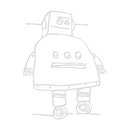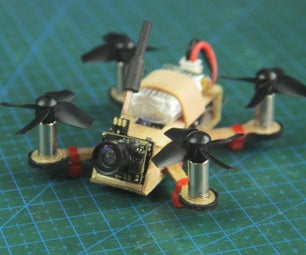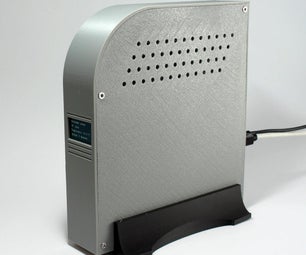Introduction: How to Control Arduino Board Using an Android Phone and a Bluetooth Module
Here is a short video showing an example app I created. I'll describe how to do the wiring, write an arduino sketch that can accept basic commands and send them and how to write the app itself. I asume you're already familiar with some of the basics, you made a few arduino projects and are familiar with the arduino IDE. If you have attempted serial communication with the arduino board everything should be fully comprehensible. If you have any problems or questions feel free to ask them in the comments section.
...and here is an example of receiving the data from the arduino board on the mobile. The temperature sensor connected to the arduino board is a ds18b20 sensor. Just to show how awesome app inventor is I added text to speech functionality - the app says the temperature every 15 seconds. The arduino code and the app is described in more detail in steps 4,5 and 6.
Step 1: Wiring & Part List
The circuit is as simple as it gets so you probably already have most of them.
You will need:
- arduino board
- bluetooth serial module (I used a btm222 module on a breakout board with an inbuilt regulator )
- an LED
- resistor (100ohm)
- wires
- breadboard
The only problematic part here is the bluetooth module. There are different modules all over the internet so be sure you check the pinout in the datasheet of the one you get as it can differ.
Also notice that there are two general classes of bluetooth modules:
Class 1 has range of about 100 meter (300 feet)
Class 2 has range of about 10meter (30 feet)
In case you're wondering they are entirely compatible and you can only get 100 meter range if both of the devices (ie the mobile and the serial module) are class one. If one of it is class 1 the maximum range is lower.
The bluetooth serial module I got has the following pins from left to right (ground, RX, TX, not connected, VCC). Obviously ground and VCC goes respectively to ground and +5V pin on the arduino board. Since we will be receiveing the data through the module and then in turn sending it to the arduino board we only need to use the TX pin on the module. Run a wire from that pin to the RX pin on the arduino board. The Led is controlled through PIN 2 on the arduino.
Step 2: Arduino Code
Below is an arduino code I used. Feel free to modify it.
The important aspect here is the baud rate - make sure it matches the baud rate of your module - check the datasheet or use AT commands to do it.
const int ledPin = 2; // the pin that the LED is attached to
byte serialA;
void setup()
{
// initialize the serial communication:
Serial.begin(19200); //baud rate - make sure it matches that of the module you got:
// initialize the ledPin as an output:
pinMode(ledPin, OUTPUT);
}
void loop() {
if (Serial.available() > 0) {serialA = Serial.read();Serial.println(serialA);}
switch (serialA) {
case 1:
digitalWrite(ledPin, HIGH);
break;
case 2:
digitalWrite(ledPin, LOW);
break;
case 3:digitalWrite(ledPin, HIGH);
delay(100);
digitalWrite(ledPin, LOW);
delay(100);
default:
break;
}
}
Step 3: The App Itself & App Inventor
If all you want is to get the app and see it running then download the app then upload it to your phone.
Download at -> https://drive.google.com/folderview?id=0B_PfPoEotOF8N2JwT3RSX011SjQ&usp=sharing
Your phone has to be set to allow apps from outside the android market/google play to be able to download them - so check the settings on your mobile.
Now if you want to modify the app go to >>
http://appinventor.mit.edu/explore/learn.html
to find out how to prepare your computer and install App inventor software. Once you have it running I suggest you do at least one or two of their basic tutorials.
Below is the source of the app that I used. You can upload it to the app inventor and then upload to your phone or modify it.
https://drive.google.com/folderview?id=0B_PfPoEotOF8N2JwT3RSX011SjQ&usp=sharing
Step 4: Receiving Data From Arduino
This step presents an example on how to receive data from the arduino board.
I decided to make something useful so I chose a ds18b20 temperature sensor. The arduino board communicates with the sensor using 1 wire interface, calculates the temperature with the help of OneWire library for arduino and sends the readings through the bluetooth module every 500 ms.
The app checks every 500 ms if there is any data available from the serial port. If data is present it is read and displayed on the screen. Additionally, there is an option to activate text to speech function and make the app say the temperature readings every 15 seconds.
Step 5: Remote Sensor - Arduino Code
The arduino code
Mind you that you need a OneWire library - you can find a link to it here:
http://playground.arduino.cc/Learning/OneWire
arduino code >>>>>>>
#include <OneWire.h>
int DS18S20_Pin = 2; //DS18S20 Signal pin on digital 2
//Temperature chip i/o
OneWire ds(DS18S20_Pin); // on digital pin 2
void setup()
{
// initialize the serial communication:
Serial.begin(19200);
// initialize the ledPin as an output:
}
void loop() {
float temperature = getTemp();
Serial.println(temperature); delay (500);
}
float getTemp(){
//returns the temperature from one DS18S20 in DEG Celsius
byte data[12];
byte addr[8];
if ( !ds.search(addr)) {
//no more sensors on chain, reset search
ds.reset_search();
return -100;
}
if ( OneWire::crc8( addr, 7) != addr[7]) {
Serial.println("CRC is not valid!");
return -1000;
}
if ( addr[0] != 0x10 && addr[0] != 0x28) {
Serial.print("Device is not recognized");
return -1000;
}
ds.reset();
ds.select(addr);
ds.write(0x44,1); // start conversion, with parasite power on at the end
byte present = ds.reset();
ds.select(addr);
ds.write(0xBE); // Read Scratchpad
for (int i = 0; i < 9; i++) {
data[i] = ds.read();
}
ds.reset_search();
byte MSB = data[1];
byte LSB = data[0];
float tempRead = ((MSB << 8) | LSB);
float TemperatureSum = tempRead / 16;
return TemperatureSum;}
Step 6: Receiving Data - the Application Side
Here you can find links to the app that receives temperature reading. There is also a source code that can be uploaded into MIT's app inventor (when you're in 'my projects' click the button 'More Actions' - you have an option 'Upload Source')
feel free to modify it ;-)
The application >>
http://speedy.sh/RMFgg/bluetoothforarduino-app-temperaturereadings.apk
The source file >>
http://speedy.sh/SHpjj/bluetoothforarduino-app-temperaturereadings-3.zip
I'll try to add something more descriptive soon, but here are some tips you might find useful if you're trying to create your own app: Make sure you understand the terms 'delimiter byte', know how to set it from MIT's app inventor and that it is a byte so be careful what data types you use. Also it seems that there is no serial timeout function implemented in the app inventor so sending data more often than receiving it can cause the app to crash (probably because there isn't anything to flush the buffer)













